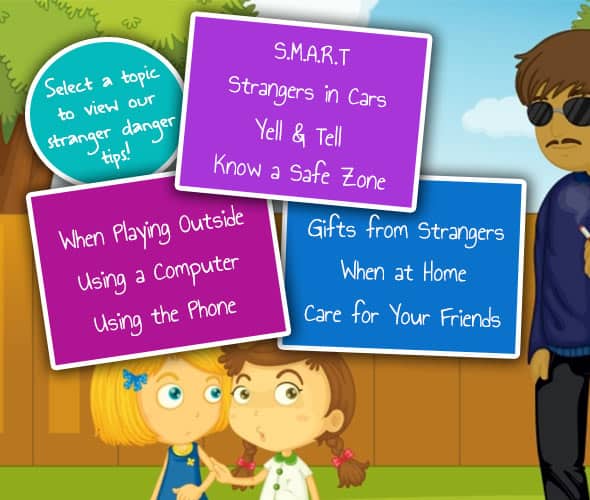“`html
Stranger Awareness for Kids: A Parent’s Guide to Safety
Welcome, caring parents! Here’s your upbeat guide on teaching your little ones the important skill of stranger awareness, infused with a healthy dose of cheer!
Understanding Stranger Awareness
Hey there, super moms and awesome dads! You’re probably here because you know that the world is full of wonders and the vast majority of people are super kind, but it’s essential to arm your kiddos with the knowledge to stay safe. In this article, we’ll explore practical tips, engaging activities, and everything in between to help you teach your child about stranger awareness without instilling unnecessary fear. So, let’s embark on this journey together with a smile and make safety a top priority!
The Basics of Stranger Safety
First things first, let’s clarify what we mean by ‘stranger’, shall we? A stranger is simply someone that your family doesn’t know well. It’s crucial to help your child understand that not all strangers are bad—many are lovely people! The goal is to encourage caution, not fear. Here are the foundational blocks to start with:
- Defining Safe and Unsafe Strangers: Explain that while most strangers are just people we haven’t met yet, it’s important to be able to identify safe strangers like police officers, firefighters, or teachers who can help in case of an emergency.
- Establishing Boundaries: Teach your children what personal space means and that it’s okay to say “no” to adults in situations that make them uncomfortable.
- Trusting their “Uh-Oh” Feeling: Children often have a natural instinct when something isn’t right. Encourage them to trust this feeling and to seek out a trusted adult or safe stranger if they ever feel uneasy.
Stay tuned! We’ve got a whole lot more to share in this article about keeping your child safe from strangers.
Opening the Conversation
Wondering how to start this convo with your kiddo without sounding like a worrywart? Keep it light and positive! Here’s how:
- Make It a Game: Role-playing different scenarios can be a fun and effective way to teach your child how to react around strangers. Pretend to be a stranger and practice different responses with your child.
- Use Storytelling: There are loads of children’s books out there that tackle the topic of stranger awareness. Read together and discuss the stories to reinforce safety messages.
- Be Open and Honest: Use age-appropriate language and examples. Assure them that it’s perfectly fine to talk about any and all feelings they have regarding strangers.
“`
Please stay tuned, as this comprehensive guide will continue with more tips, strategies, and reassurance to help you guide your child through the nuances of stranger awareness with total confidence and an ever-present smile. Let’s keep our kids informed and safe, while still allowing them to explore and enjoy the wonderful world around them!

“`html
Five Things Parents Should Know in Preparing for Stranger Awareness
Joyful guardians of our future generation, gearing up for the talk about strangers can feel daunting, but with these five golden nuggets, you’ll be well on your way to creating a safe environment for your little adventurers!
-
Start Early with Age-Appropriate Discussions
The seeds of safety are best planted early! Tailoring the conversation to your child’s age ensures that they grasp the concept of stranger awareness in a way that’s understandable and not overwhelming. For toddlers, simple lessons like ‘Don’t wander off without mommy or daddy’ can be a good starting point. As they grow, evolve the conversation to fit their understanding!
-
Encourage Questions and Listen Actively
Children are naturally curious, and their questions can provide insightful peeks into their thoughts. Embrace their inquisitiveness and provide clear answers. Most importantly, active listening shows that their concerns are valid and that you’re a safe harbor for any of their worries.
-
Regularly Reinforce the Message, But Keep It Positive
Consistency is key! Regularly revisiting the topic of stranger awareness helps to cement the message. But remember, we’re not instilling fear; we’re empowering our kids to be smart and savvy. Keep the tone positive, emphasizing the smart choices they can make rather than dwelling on the ‘what ifs’.
-
Approach Stranger Danger with Nuance
It’s not just about ‘strangers’. Sometimes, the people who mean well or whom we know superficially may also cross boundaries. Teach children to be aware of their comfort zones with everyone and to be assertive about their personal space and safety.
-
Plan and Practice Together
The old adage ‘practice makes perfect’ certainly applies here! Go over various scenarios and rehearse what to do if approached by a stranger. Come up with a family safety plan, including a code word for emergencies, and practice it until it becomes second nature.
With each step you take with your child on this journey of stranger awareness, you’ll be building their confidence and your peace of mind. Happy practicing, and may your safety chats be as joyous and engaging as story time!
“`
Continue to roll out content with each section delving into enriching discussion and actionable strategies for parents to effectively teach their children about stranger safety. Initialize conversation with interactive activities, transition into discussing common misconceptions and nuances about the concept of ‘stranger’, and include community involvement in the later sections. Keep the tone light-hearted and comforting, offsetting the seriousness of the topic with an approachable and supportive writing style. Ensure all content is clear, well-structured, and SEO-friendly for immediate use on a WordPress website, providing parents with a user-friendly experience and easy navigation through the information.
See more great Things to Do with Kids in New Zealand here. For more information see here
Disclaimer
The articles available via our website provide general information only and we strongly urge readers to exercise caution and conduct their own thorough research and fact-checking. The information presented should not be taken as absolute truth, and, to the maximum extent permitted by law, we will not be held liable for any inaccuracies or errors in the content. It is essential for individuals to independently verify and validate the information before making any decisions or taking any actions based on the articles.




